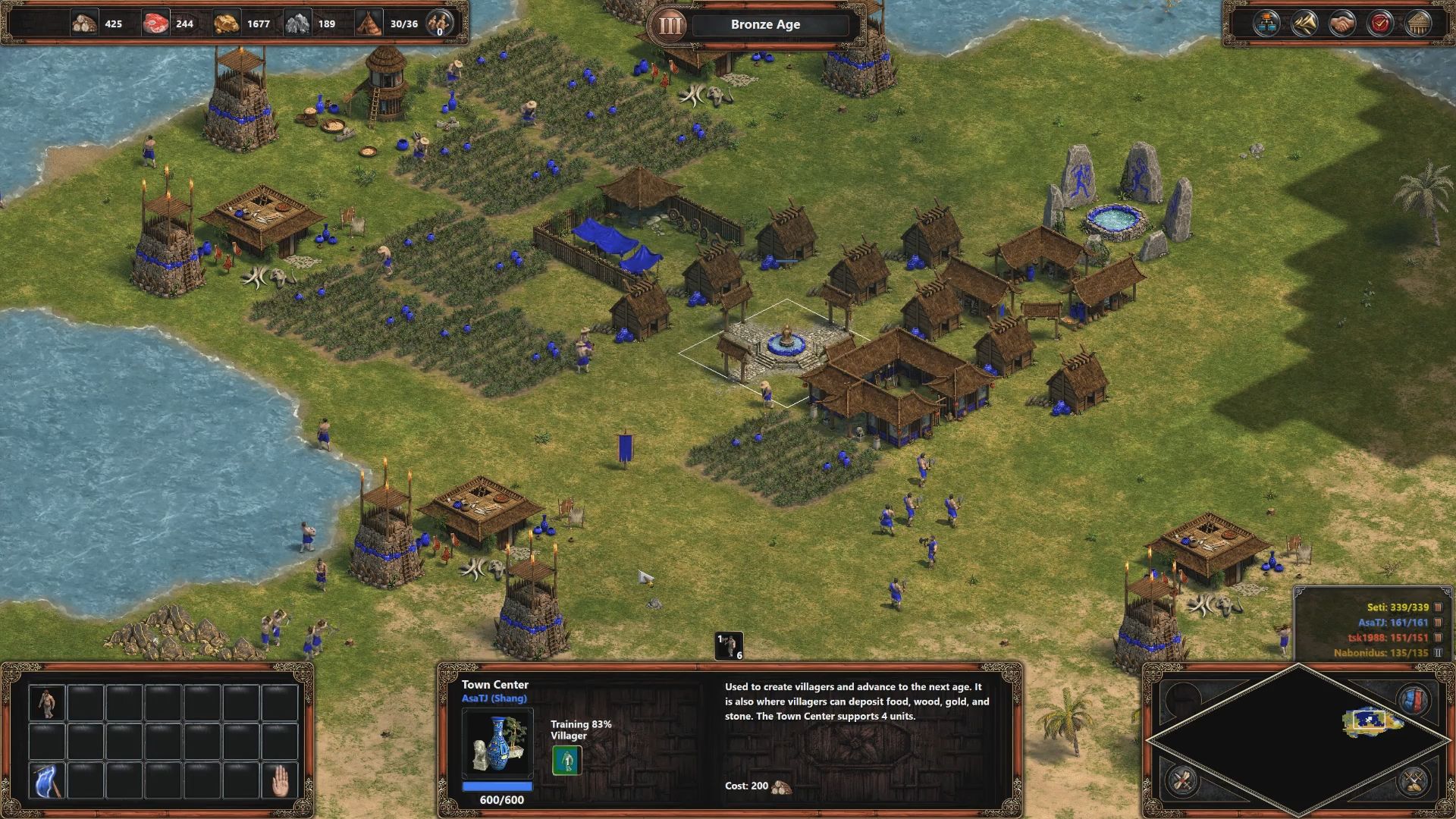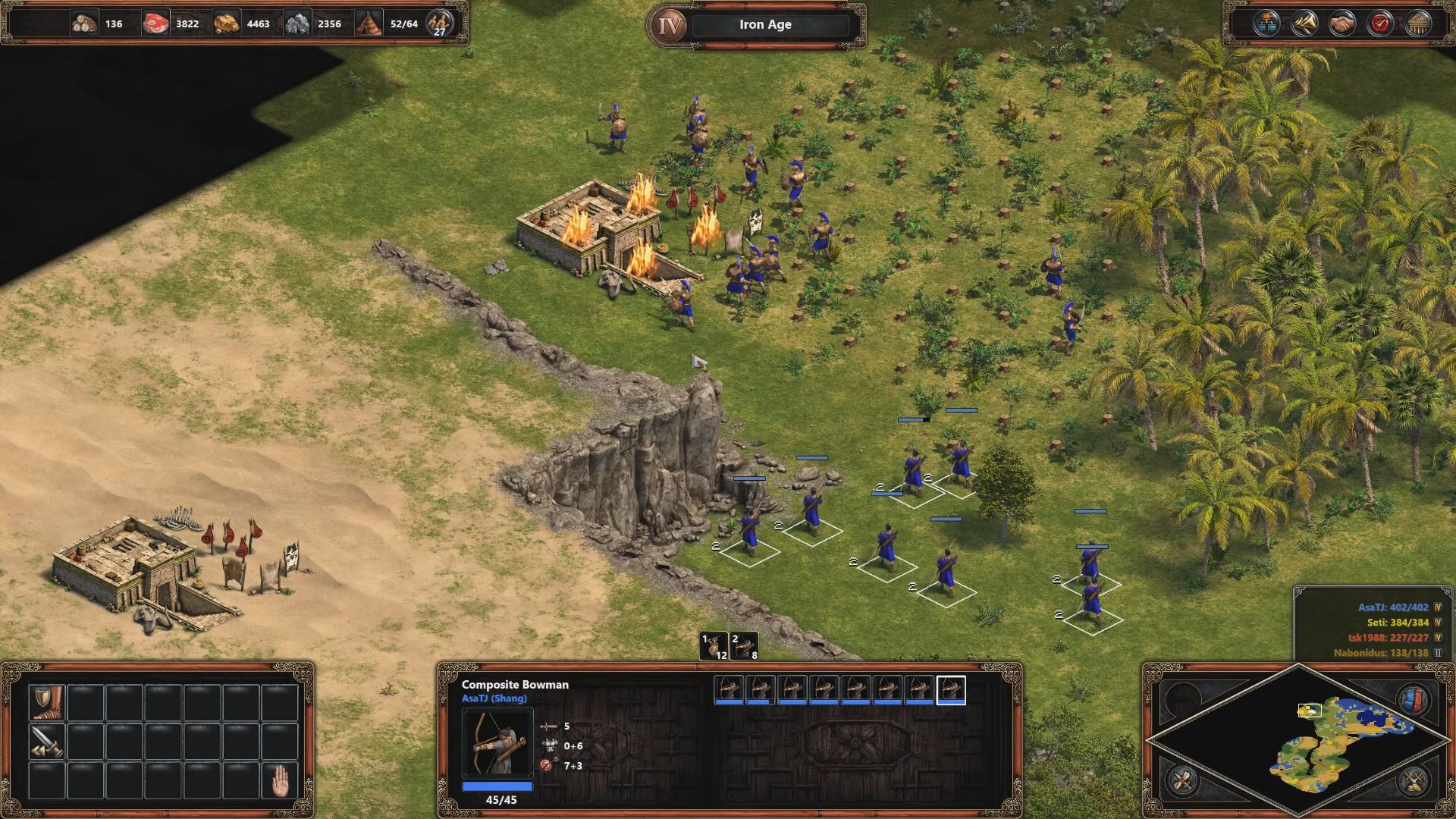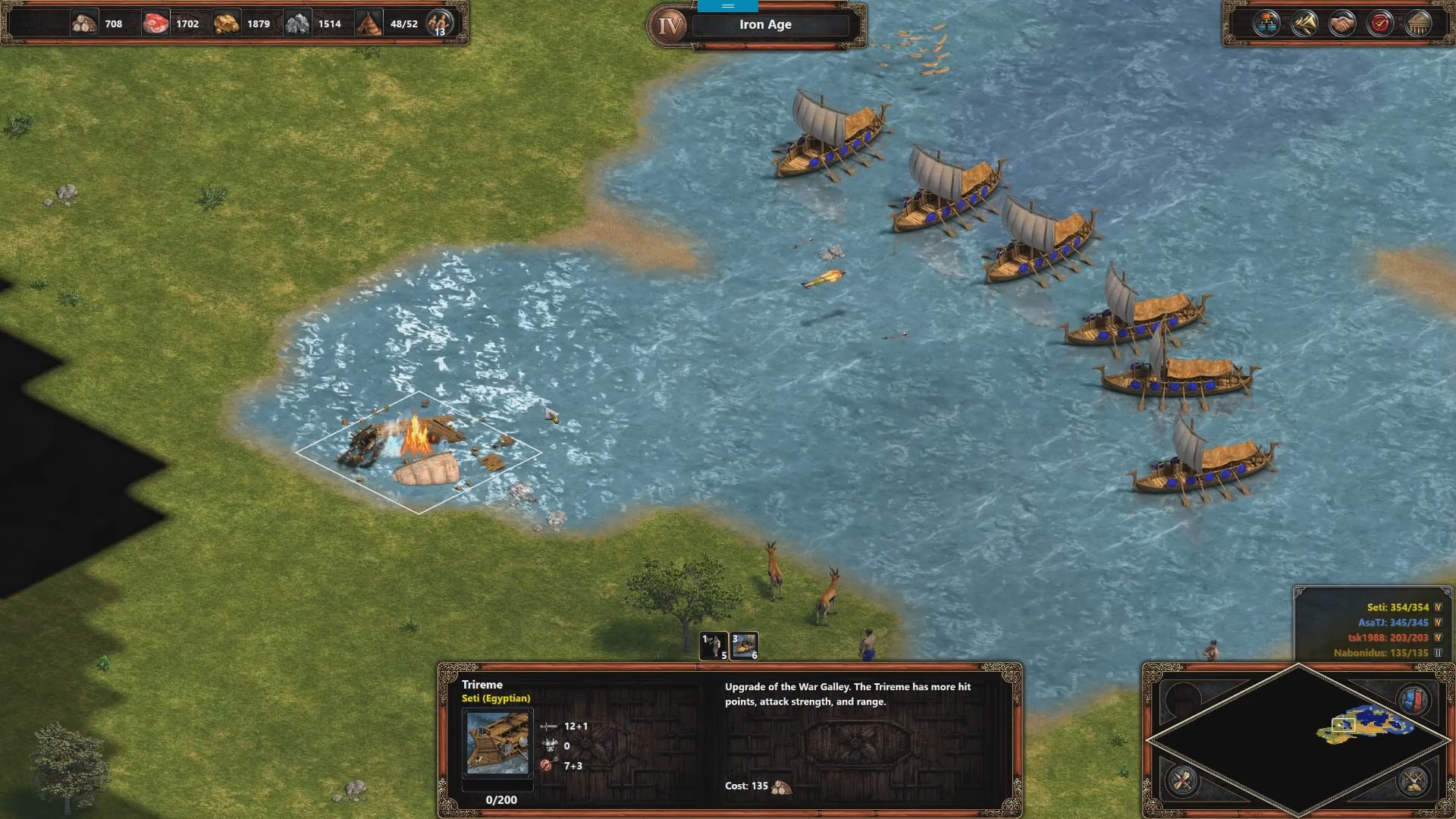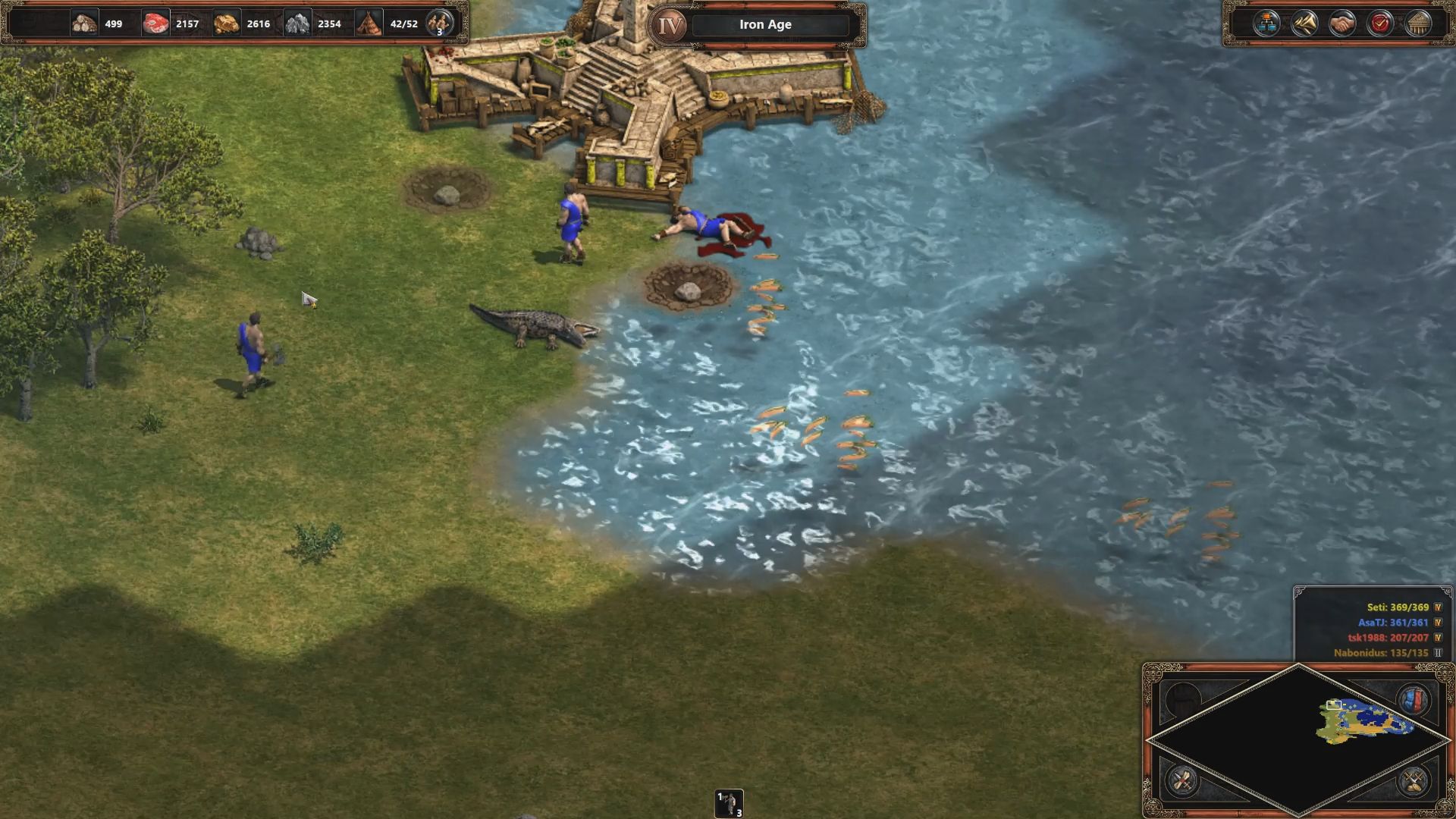The last time I played the original Age of Empires was at the expense of math homework involving long division. Bill Clinton was president of the United States, Keanu Reeves was ducking bullets in slow-mo, and Ricky Martin was Livin’ la Vida Loca. It holds an odd place in my gaming past as the first historical RTS I ever picked up, but also by being immediately and permanently eclipsed by its superior sequel only a couple years later. Thus, my first thought after the announcement of Age of Empires: Definitive Edition was, “Why would I play that again in a world where Age of Empires II exists?”
As it turns out, the original Age is still an entertaining, multilayered, tactical multiplayer experience (the campaign wasn’t available yet in this particular beta) that isn’t half bad to look at with the graphical renovations Definitive Edition has received.

Still, there were plenty of things I miss from AoE2. Remembering little details like, “Wow, the first game didn’t have unique units for each faction?” tripped me up a little. But even in newer strategy games, there is something to be said for simplicity. And it’s perhaps because of this relative simplicity that the formula remains enjoyable.
Age of Empires is largely a game about expansion and division of labor. Balancing your population between building new structures, gathering the right proportions of each of the four main resources, and having an army large enough to protect it all and expand your borders is the decision-making engine that drives everything. The diversity of resources also tends to steer expansion differently than most modern RTSes. In StarCraft 2, for instance, expansion bases are almost interchangeable in terms of their economic output. You take a new base when you need to increase your intake of any given resource and the primary discriminating factor is location.

Age of Empires runs a little differently in that running out of stone or gold while you still have plenty of wood to harvest might lead you to expand differently than if the reverse were true. Expansion tends to happen in smaller, overlapping waves based on what resource you’re about to run out of in the immediate future. I find myself thinking about “wood expansions” and “stone expansions” rather than simply grabbing another base.
This specificity also means scouting the map is important not just for knowing what your enemy is up to, but for locating expansion locations—something that generally isn’t a concern in modern RTSes. All the while, the clearing of forests and establishment of new structures and fortifications as the ages progress gives a very real feeling that you’re moving out of the mists of the untold past and into an era of warring empires, which is a big part of why I originally found Age of Empires fascinating as a kid.

There are still some issues with unit control I had to re-adapt to.
Also notable is the more naturalistic unit balancing, as opposed to the rock-paper-scissors schemes we’re used to today that are specifically designed for hard counters and reactive play. In Age of Empires, a swordsman works intuitively how you’d expect a swordsman to work. The same can be said of a chariot archer, a hoplite, or a war elephant. There’s less need to memorize what kinds of units are intended by the developers to be particularly good against others, because it mostly follows along the lines of real-world logic. You don’t run into a lot of hidden modifiers that cause you to lose a battle because you didn’t realize a certain archer had a special damage bonus against the armor type of your cataphract.
Keep up to date with the most important stories and the best deals, as picked by the PC Gamer team.
As a result, I found that I was focusing a lot more on unit positioning and the terrain of each engagement than specific army compositions, which was somewhat refreshing. There are still some issues with unit control I had to re-adapt to, however. Similar to marines in StarCraft Remastered, the front rank of a large group of archers will begin firing as soon as they get into range, often blocking the back rank from doing the same. This led to some unnecessary-feeling micro, as I’ve gotten used to smarter unit AI in recent years.

Microsoft Studios has done an excellent job on the graphics and the user interface. It still looks and feels how I remember it looking and feeling in the '90s, but with a level of detail that treats you for zooming in on a stately town center or a throng of busy villagers chopping wood. Each sprite is colorful, readable, and popping with personality at 1080p. There are RTSes that have come out in the last five years that are less pleasing to look at. Navigating building menus, creating unit groups, and scrolling around the map also never felt clunky or dated—which is, again, a feat that not all modern games are able to accomplish. My one visual gripe was the minimap, which in general isn’t as communicative as I’m used to in newer games.
The most striking thing about Age of Empires: Definitive Edition from the time I’ve spent with it so far is that it truly doesn’t feel like I’m playing a remaster of a 20-year-old game. If this exact build were released for the first time as a brand new franchise today, I think I’d still have a relatively positive impression of it. And perhaps that goes to show that not all classics are classics just because they broke new ground. At least in this case, it’s also because it’s still a really fun strategy game—a Wonder in and of itself—that continues to outshine much of what came in the two decades of RTSes it inspired.
Here's everything we know about the in-development Age of Empires 4 if you're curious.
Len Hafer is a freelancer and lifelong PC gamer with a specialty in strategy, RPGs, horror, and survival games. A chance encounter with Warcraft 2: Tides of Darkness changed her life forever. Today, her favorites include the grand strategy games from Paradox Interactive like Crusader Kings and Europa Universalis, and thought-provoking, story-rich RPGs like Persona 5 and Disco Elysium. She also loves history, hiking in the mountains of Colorado, and heavy metal music.

